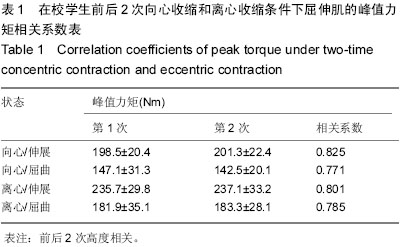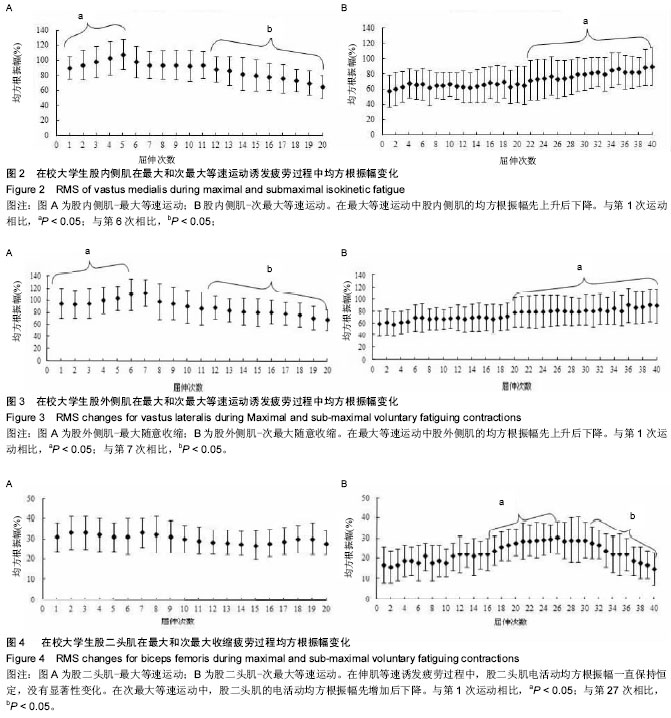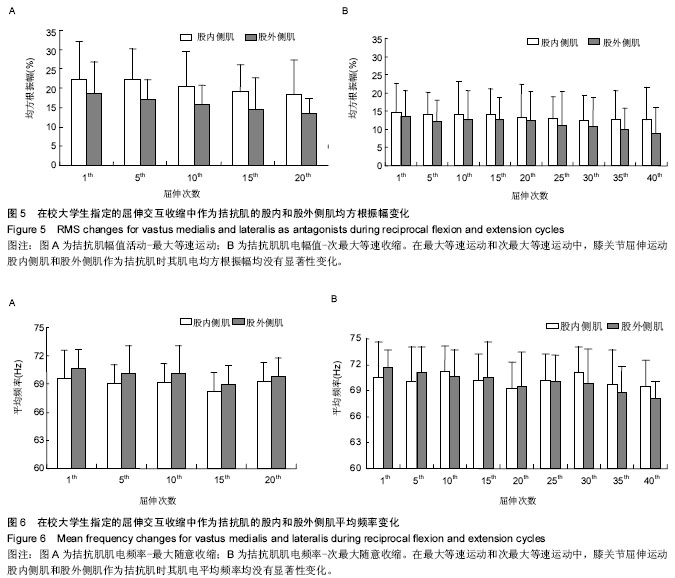| [1] 文烨.优秀乒乓球运动员肘关节等速屈伸运动时拮抗肌共激活现象研究[J].中国体育科技,2012,48(4):71-77.
[2] 张海红,王健.双侧屈伸肘运动中主动肌与拮抗肌的表面肌电图变化[J].中国运动医学杂志,2009,28(4):431-435.
[3] 王乐军,陆爱云,牛文鑫,等.运动性肌肉疲劳诱发拮抗肌活动变化的特征及机制研究现状与思考[J].中国运动医学杂志, 2014, 33(7): 95-99.
[4] Carregaro R, Cunha R, Oliveira CG, et al. Muscle fatigue and metabolic responses following three different antagonist pre-load resistance exercises.J Electromyogr Kinesiol.2013; 23(5):1090-1096.
[5] Beck TW, Housh TJ, Johnson GO, et al. Mechanomygraphic and electromyographic time and frequency domain responses during submaximal to maximal isokinetic muscle actions of the biceps brachii. Eur J Appl Physiol.2004;92(3): 352–359.
[6] Rodríguez Jiménez S, Benítez A, García González MA, et al. Effect of vibration frequency on agonist and antagonist arm muscle activity.Eur J Appl Physiol. 2015;115(6):1305-1312.
[7] Torrado P, Cabib C, Morales M, et al. Neuromuscular Fatigue after Submaximal Intermittent Contractions in Motorcycle Riders.Int J Sports Med.2015;36(3):96-99.
[8] Plautard M, Guilhem G, Cornu C, et al.Time-course of performance changes and underlying mechanisms during and after repetitive moderately weight-loaded knee extensions. J Electromyogr Kinesiol. 2015;25(3):488-94.
[9] Losher NW,Creswell GA,Thorstensson A. Excitatory drive to the alpha-motoneuron pool during a fatiguing submaximal contraction in man. J Physiol.1996;491(1): 271-280.
[10] Duchateau J, Baudry S. The neural control of coactivation during fatiguing contractions revisited. J Electromyogr Kinesiol. 2014; 24(6):780-788.
[11] Kellis E, Zafeiridis A, Amiridis IG. Muscle coactivation before and after the impact phase of running following isokinetic fatigue.J Athl Train.2011;46(1):11-19.
[12] Weavil JC, Sidhu SK, Mangum TS, et al. Intensity-dependent alterations in the excitability of cortical and spinal projections to the knee extensors during isometric and locomotor exercise.Am J Physiol Regul Integr Comp Physiol. 2015; 308(12):998-1007.
[13] Beretta-Piccoli M, D'Antona G, Barbero M,et al.Evaluation of central and peripheral fatigue in the quadriceps using fractal dimension and conduction velocity in young females. PLoS One.2015;10(4):e0123921.
[14] Wretling ML, Henriksson-Larsen K, Gerdle B.Inter-relationship between muscle morphology, mechanical output and electromyographic activity during fatiguing dynamic knee-extensions in untrained females. Eur J Appl Physiol.1997;76(6): 483-490.
[15] Robbins DW, Young WB, Behm DG,et al.The effect of a complex agonist and antagonist resistance training protocol on volume load, power output, electromyographic responses, and efficiency. J Strength Cond Res. 2010;24(7):1782-1789.
[16] Linnamo V, Moritani T, Nicol C, et al. Motor unit activation patterns during isometric, concentric and eccentric actions at different force levels. J Electromyogr Kinesiol.2003;13(1): 93-101.
[17] Babault N, Pousson M, Michaut A, et al. Effect of quadriceps femoris muscle length on neural activation during isometric and concentric contractions. J Appl Physiol.2003;94(3): 983-90.
[18] Gray JW, Chandler JM. Percent decline in peak torque production during repeated concentric and eccentric contractions of the quadriceps femoris muscle. J Orthopedics Sports Phys Ther. 1989; 10(8): 309-314.
[19] Kleine B, Stegeman D, Mund D, et al. Influence of motoneuron firing synchronisation on sEMG characteristics in dependence of electrode position. J Appl Physiol.2001;91(4): 1588-1599.
[20] Wakeling JM.Patterns of motor recruitment can be determined using surface EMG. J Electromyogr Kinesiol. 2009;19(2):199-207.
[21] Liu JZ, Shan ZY, Zhang LD, et al. Human brain activation during sustained and intermittent submaximal fatigue muscle contractions: an FMRI study. J Neurophysiol. 2003;90(1): 300-312.
[22] Rodriguez-Falces J, Izquierdo M, González-Izal M,et al. Comparison of the power spectral changes of the voluntary surface electromyogram and M wave during intermittent maximal voluntary contractions.Eur J Appl Physiol. 2014; 114(9):1943-54.
[23] Solomonow MR, Baratta RV, Zhou BH, et al. The synergistic action of the ACL and thigh muscles in maintaining joint stability. Am J Sports Med.1987;15(3): 207-213. |



